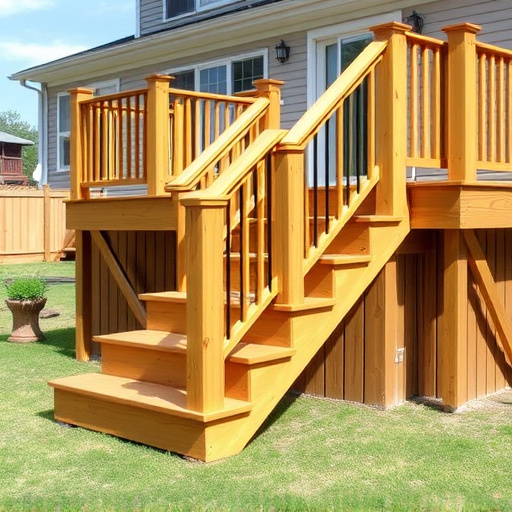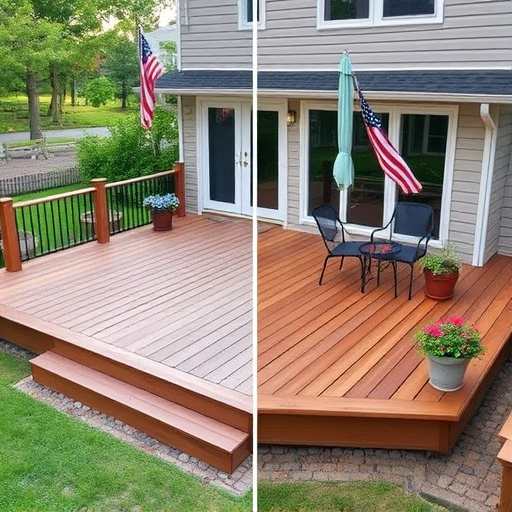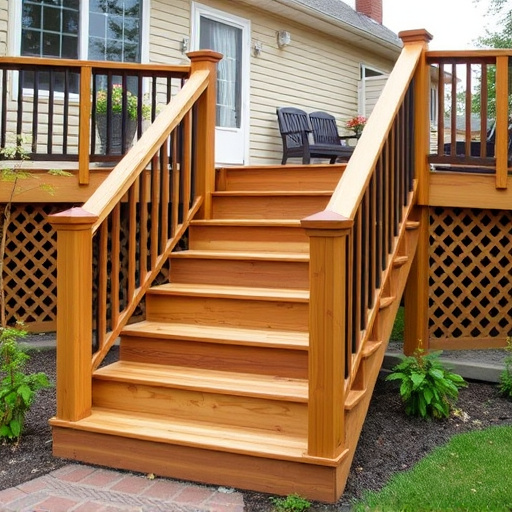Deck builders must follow ADA guidelines and slip resistance testing standards for safe, durable exterior home improvements. Preparation includes cleaning, drying, and clearing the area, ensuring adequate lighting, and setting up guardrails. Perform both wet and dry traction tests using specialized equipment to ensure maximum safety and functional grip, critical for deck maintenance and construction.
Testing slip-resistant decking effectiveness is crucial for ensuring safe outdoor living spaces. As a deck builder, understanding and adhering to testing standards is vital for structural integrity and user safety. This guide walks you through preparing a testing area and conducting wet and dry traction assessments, empowering you to make informed decisions that meet industry standards. Implement these steps to guarantee your deck’s safety and reliability.
- Understand Slip Resistance Testing Standards
- Prepare the Testing Area Safely
- Conduct Wet and Dry Traction Assessments
Understand Slip Resistance Testing Standards
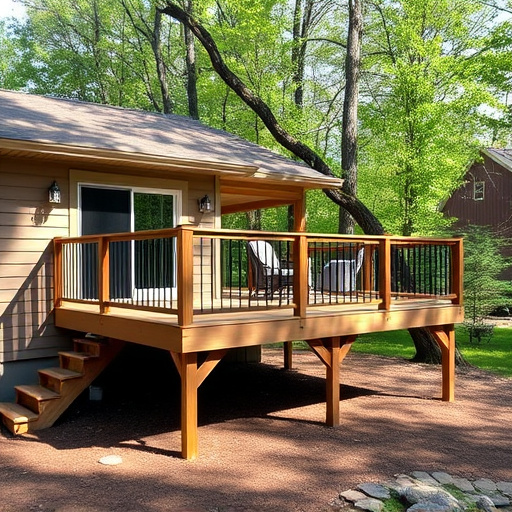
Slip resistance testing standards are crucial for deck builders to ensure safe and durable exterior home improvements. When it comes to evaluating a deck’s slip-resistance, there are specific guidelines and protocols to follow. One widely recognized standard is the American with Disabilities Act (ADA) guidelines, which provide clear criteria for accessible design, including outdoor spaces. These standards measure traction levels using different test methods, such as the Wet Slip Resistance Test or the Dry Traction Test, to simulate various environmental conditions.
For deck builders, understanding these testing methods is essential, especially when considering exterior spaces subject to varying weather conditions and potential storm damage repair needs. By adhering to slip resistance testing standards, builders can create safer walking surfaces, reduce the risk of accidents, and enhance the overall durability of their work—a key aspect in ensuring long-lasting siding repairs and a well-protected home.
Prepare the Testing Area Safely

Before testing the slip-resistancy of any decking, it’s crucial to prepare the testing area safely. This involves ensuring the surface is clean, dry, and free from any debris or foreign materials that could skew results. Deck builders should also consider the lighting conditions; adequate illumination is essential for accurate assessments and the safety of testers. A well-lit area allows for clear observation of traction levels and enables the identification of any potential hazards, such as uneven surfaces or loose boards.
Additionally, setting up guardrails or barriers around the testing zone is a professional siding and roofing solution that prevents accidental falls. This step is especially vital in commercial siding installations where large areas need to be tested. By taking these precautions, deck builders can guarantee a secure environment for testing, ensuring reliable results and the safety of their personnel.
Conduct Wet and Dry Traction Assessments
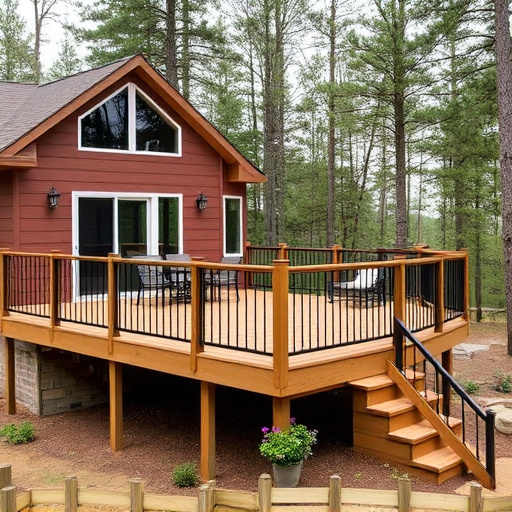
To accurately test the slip-resistant effectiveness of a deck, it’s crucial to conduct both wet and dry traction assessments. Wet conditions are often considered more hazardous due to the potential for water to reduce friction significantly. Deck builders should simulate various levels of moisture, from light rain to standing water, to mimic real-world scenarios. Using specialized equipment like tribometers or slip meters, they can measure the coefficient of friction under these conditions. This data is invaluable for understanding the safety level of the deck surface.
During dry traction assessments, focus on evaluating the overall texture and finish of the decking material. Rougher surfaces generally offer better grip. Deck builders should ensure that any textured coatings or patterns are applied evenly to provide consistent traction. Unlike siding services or siding replacement projects where visual appeal is paramount, the primary concern here is functional safety. Even if a roof repair is not directly relevant to slip resistance, ensuring adequate traction remains a critical aspect of deck maintenance and construction.
Testing slip-resistant decking effectiveness is crucial for ensuring safe outdoor spaces, especially for deck builders aiming to meet industry standards. By understanding testing standards, preparing the area properly, and conducting both wet and dry traction assessments, you can accurately evaluate a deck’s safety. These steps empower deck builders to make informed decisions, creating secure environments for all users.











